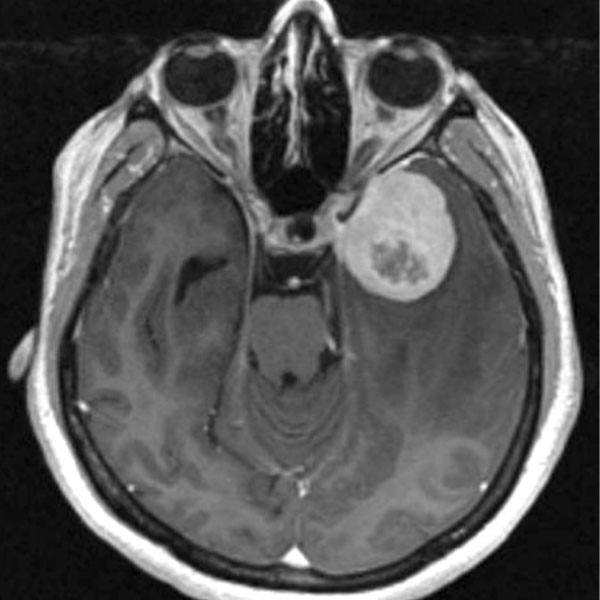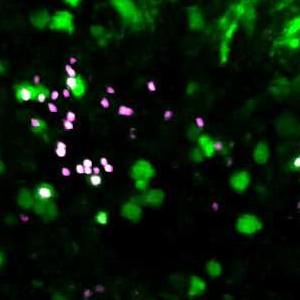-
Nicotine Dependence Center: 25 years of research
In 1988, when counselors greeted the first patient at Mayo Clinic's new Nicotine Dependence Center, attitudes toward smoking were much different.
A person could still light up a cigarette on an airplane or in a restaurant. Newspapers and magazines featured advertisements encouraging women to enjoy a Virginia Slims cigarette with its iconic slogan, "You've come a long way, baby!" Men were enticed to discover their rugged individualism in Marlboro Country. And the cartoon character Joe Camel was better known to some schoolchildren than was Mickey Mouse.
The Surgeon General had yet to declare nicotine addictive, and there was an impenetrable wall of silence around the tobacco industry. More than 28 percent of all Americans smoked a pack of cigarettes a day, according to the National Cancer Institute. And no one even mentioned secondhand smoke.
Now, 25 years later, success stories abound:
- More than 50,000 patients from 64 different countries have been treated for nicotine addiction at the Nicotine Dependence Center
- Only 18 percent of American adults smoke today, according to the American Cancer Society
- More than 15,000 health care professionals around the world have participated in the center's educational programs
- More than 1,300 health care providers from 46 states and 27 countries have completed training to become certified tobacco treatment specialists
The human face of nicotine addiction
Still, when the Nicotine Dependence Center staff members go to work every day, they are keenly aware of a disturbing fact that is as true today as it was in 1988.
"Tobacco use is still the single most preventable cause of premature death in the world," says Richard D. Hurt, M.D., founding director of the Nicotine Dependence Center.
According to the National Cancer Institute, an estimated 443,000 people in the United States will die in a given year because of tobacco-caused illnesses. Complications from tobacco use account for 1 in 5 deaths in the U.S. annually.
Worldwide, the news only gets bleaker. The World Health Organization estimates that there are more than 1 billion smokers and that the number is increasing. Tobacco products kill nearly 6 million people every year. If left unchecked, tobacco use will cause up to 1 billion deaths by the end of the 21st century.
More than its many successes, these facts — and the very human faces behind the numbers — drive Dr. Hurt and his colleagues. This urgency motivates them to improve treatment programs, to educate more health care providers in more countries, and to look for new answers for treatments through its groundbreaking research program.
From the start of the center, Dr. Hurt insisted on applying the Mayo Clinic philosophy as symbolized in the three shields of the clinic logo: medical practice, education and research.
"The emphasis has always been on the patient," Dr. Hurt says. "Now and when we first started the center in 1988, it was always about the patient. The clinical needs of the patient have driven our education and research programs."
Early nicotine addiction research
The research program at the Nicotine Dependence Center has been on the cutting edge of discovery since shortly after opening its doors in April 1988. By that September, Dr. Hurt had his first grant to study the effectiveness of the nicotine patch.
"At the time, nicotine gum was the only form of nicotine replacement therapy available to patients," Dr. Hurt says. "Now we have many options, but the research on the patch was a giant step forward."
Ivana T. Croghan, Ph.D., joined the staff of the Nicotine Dependence Center in 1991 and is now its research program coordinator. She and Dr. Hurt performed their first clinical trial together, studying nicotine replacement levels — the dose needed to compensate for nicotine from smoking — for patients using the patch.
"At the time, treatment with the patch was literally one size fits all," says Dr. Croghan, an experimental pathologist and epidemiologist at Mayo Clinic in Rochester, Minn. "We verified what we already instinctively knew: If one 21-milligram patch was appropriate for the one-pack-a-day smoker, then two patches for the two-pack-a-day smoker gave him the best chance of success in quitting."
Through the years, the research team has studied every form of nicotine replacement therapy available.
"We have conducted studies on the patch, gum, inhalers, lozenges and nasal spray," Dr. Croghan says.
"We studied how the brain controlled addiction and how that might be modulated," says Thomas P. Moyer, Ph.D., who used his expertise in the laboratory to support Dr. Hurt's early research and is now an emeritus Mayo Clinic laboratory pathologist. "We needed to understand the science behind how these factors influenced a person's addiction to nicotine."
The Nicotine Dependence Center is doing just that. The center's research team has conducted 110 randomized clinical trials involving more than 25,000 research participants in the last quarter century.
Interrupting the cycle of nicotine addiction
There's a simple power behind the idea that preventing a disease is better than having to treat it later. The wisdom of getting people to stop using tobacco products before needing intensive medical intervention has driven the Nicotine Dependence Center's research team since it began that first research study in 1988.
It's still a philosophy embraced today by Jon O. Ebbert, M.D., an internist at Mayo Clinic in Rochester and associate director for research in the center.
"If we can interrupt the cycle of addiction," Dr. Ebbert says, "we're giving (the patients) their lives back — lives that can be longer, healthier and freer of the many medical problems brought about by tobacco use."
Research in the Nicotine Dependence Center now includes behavioral interventions for tobacco users, population studies, studies on the cost-effectiveness of various interventions and outcomes research.
Researchers in the center have also studied medications to treat tobacco addiction. Two drugs, bupropion (Zyban) and varenicline (Chantix), have become staples in treating tobacco dependence.
"We've been very active in studying drug therapy as we researched how bupropion helps reduce nicotine cravings and how varenicline works with the nicotine receptors in the brain," Dr. Croghan says.
Using zebrafish to fight nicotine addiction
The minnow-like zebrafish emerged as a research model for behavioral studies of nicotine exposure about a decade ago. Because of their small size, fast reproductive cycles and externally developing transparent embryos, zebrafish have enabled studies that would not be feasible using traditional animal models.
"Amazingly, the zebrafish actually has 100 percent of many pathway genes," says biochemist Stephen C. Ekker, Ph.D., director of the Mayo Clinic Addiction Research Center in Rochester. "For example, the fish contains orthologues — the same copies — for all of the nicotinic receptors found in people."
Dr. Ekker and the Addiction Research Center team have shown that zebrafish respond to nicotine and frontline smoking-cessation therapies in the same way that humans do.
Because only about half the people who use varenicline find that it helps, researchers have used zebrafish and their ability to detect and block nicotine to study new drug combinations. The team has two promising leads in the zebrafish, representing potential help for patients who have not benefitted from current treatments.
"The advantage is that it helps us focus on potential medications that can help treat nicotine dependence," Dr. Croghan says. "Once we know that a drug has been successful with the zebrafish, we can move forward with the clinical trial with confidence."
Combination therapy for nicotine addiction
"Much of the fundamental work in nicotine research has been done here at Mayo," Dr. Ebbert says. "But three key areas of research really stand out: combination therapy, high-dose nicotine replacement therapy and new drug development. How tobacco dependence is treated is different today because of this work.
"Combination therapy is important because it can attack the addiction from different angles using different neuropharmacologic targets," he adds.
One way that combination therapy works is by using a long-acting product such as the patch in conjunction with a short-acting product such as nicotine gum, lozenges, inhalers or nasal spray. With the patch, the patient gets a steady release of nicotine that reduces withdrawal symptoms, with an occasional boost to the nicotine level from the short-acting product when nicotine cravings are the most intense.
"It is analogous to diabetes management with long-acting baseline insulin and short-acting insulin for meals," says J. Taylor Hays, M.D., a Mayo Clinic internist in Rochester and now director of the Nicotine Dependence Center. "Or like pain management with long-acting pain medicine taken on a regular schedule and 'rescue' treatment with a short-acting medication as needed."
The other approach to combination therapy is to combine two medications with different actions and different targets in the brain. But both targets are important in the reinforcing effects of nicotine.
"Varenicline targets the nicotine receptor, partially stimulating and partially blocking," Dr. Hays explains. "And bupropion, we believe, works by targeting increased dopamine in the reward center. By hitting both targets, we believe we may get an additive effect of the meds on reducing withdrawal and urges to smoke."
Still exploring new ideas
The work of the research program continues in important areas, including new drug therapy, new combination therapies, gender and tobacco use, and the connection between tobacco use and alcohol consumption. Dr. Ebbert hopes to add e-cigarettes to the list, as this popular new alternative nicotine delivery method remains largely unstudied.
How tobacco dependence is treated tomorrow will most likely be influenced by the work being done today by the Nicotine Dependence Center's research program. In the meantime, physicians and counselors in the center will continue to see patients, offering the best treatment options for the most preventable cause of premature death in the world.







